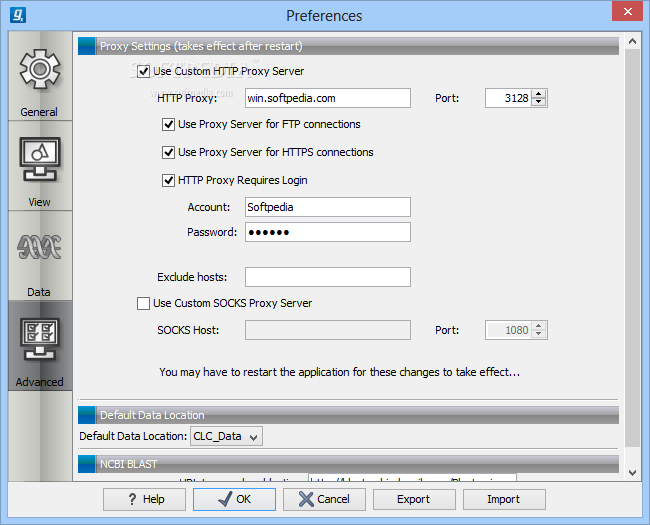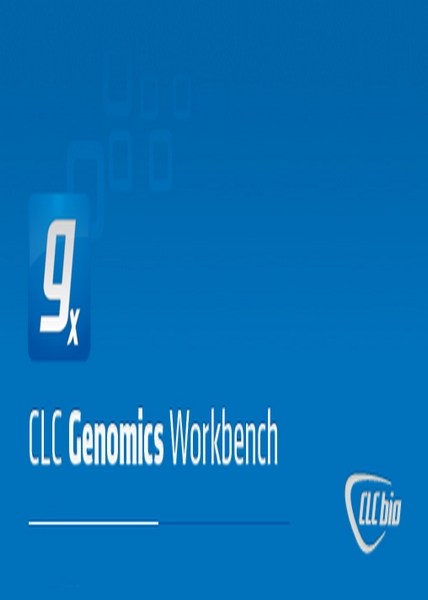

- Allocating more memory into clc genomics workbench how to#
- Allocating more memory into clc genomics workbench full#
- Allocating more memory into clc genomics workbench software#
- Allocating more memory into clc genomics workbench code#
People who have no experience with Linux command line should first follow the 'Linux for bioinformatics' training ( ) or they will slow down the full class. Basic knowledge of Illumina NGS read structure is also required for the same reason.Basic knowledge of human genome structure, transcriptome structure, and nomenclature is necessary to evaluate and understand the training steps.
Allocating more memory into clc genomics workbench code#
Linux command line basic skills are absolutely required to understand the code used throughout the CLI part of this session.
Allocating more memory into clc genomics workbench how to#
The dedicated page Download read information and FASTQ data from the SRA details how to download and reformat data from SRA (ENA) and can be used as guide to obtain other published datasets The sequencing data used in this session was obtained from the SRA under the reference SRP012167. It does not aim at bringing users to a professional NGS analyst level but provides enough information to allow motivated biologists understand what DNA sequencing practically is, to read and reuse command-line code, and when necessary to communicate knowingly with NGS experts for more in-depth needs. This training does not cover all currently available methods. All code fragments used in the training pages can easily be recycled and adapted, and will constitute the basis of your own workflows.

Allocating more memory into clc genomics workbench software#
This training gives an introduction to the use of popular NGS analysis software packages at the command line tools for more advanced Users or Users having needs exceeding the capacity of the defunct BITS Galaxy platform. For the latest, please refer to follow-up sessions covering the use of Ingenuity Pathway Analysis or related tools.


Although this workflow uses transcript information during the mapping, this protocol does not consider splice variants and maps all results to Gene models for further functional analysis.This protocol does not de-novo assemble reads but instead maps reads to a known transcriptome model (it is therefore not directly applicable to organisms for which no transcriptome is available).This protocol is not valid to analyze survival effects associated with gene expression.This protocol is not valid for dose response analysis.This protocol is not valid to analyze time series experiments.Multiple Anova or other global statistical methods will not be used here. This training is restricted to contrasts between pairwise experimental conditions.We nevertheless recommend using Galaxy if your aim is to practice NGS tools at small scale on a desktop computer used by you and few colleagues This session does not use the popular 'Galaxy' system because of the absence of a dedicated server and of the time overhead associated with data input and output under this system. Perform differential expression analysis using several popular R/Bioconductor tools and obtain gene-level data ready for functional analysis and biological interpretation.Walk through a complete analysis workflow including read QC, read mapping to the human hg19 genome, and counting the reads mapping to each human transcript.Using publicly available Illumina RNASeq samples to: 6.5 Reviews about RNASeq analyses methodsĪims of the NGS RNASeq differential expression analysis 2-days session.6.4 Functional analysis of the DE gene lists.6 Complementary Learning: Recommended and Related Readings.4.2.4 Differential expression analysis in R-bioconductor and using GUI apps.4.2.2 Required to prepare data for this session but not covered.4.2.1 Code developed in these exercises.1 Aims of the NGS RNASeq differential expression analysis 2-days session.


 0 kommentar(er)
0 kommentar(er)
